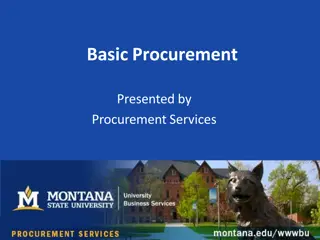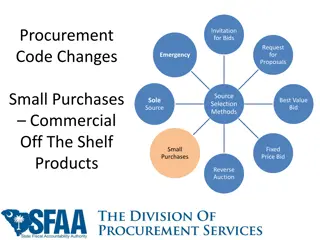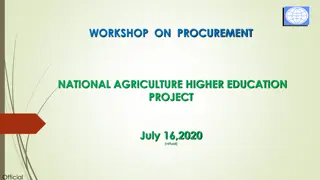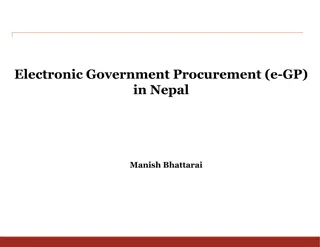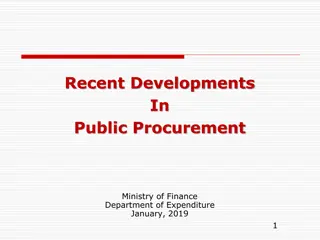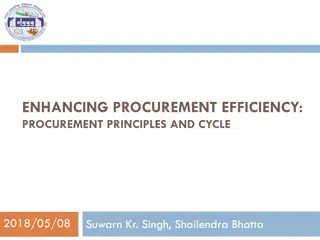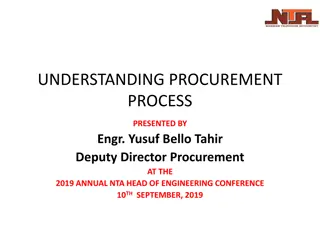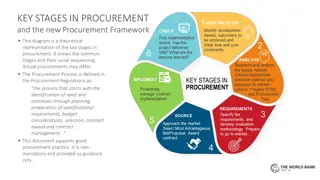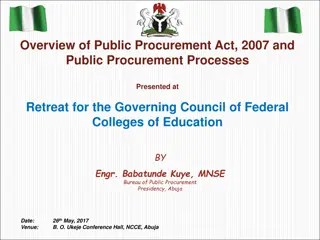Methods for Complex Procurement
Comparison of procurement methods and initiatives in the USA, European Union, and South Africa, focusing on innovative approaches to complex procurement processes. Insights into goals, policies, and risks associated with pre-commercial procurement strategies.
Download Presentation

Please find below an Image/Link to download the presentation.
The content on the website is provided AS IS for your information and personal use only. It may not be sold, licensed, or shared on other websites without obtaining consent from the author.If you encounter any issues during the download, it is possible that the publisher has removed the file from their server.
You are allowed to download the files provided on this website for personal or commercial use, subject to the condition that they are used lawfully. All files are the property of their respective owners.
The content on the website is provided AS IS for your information and personal use only. It may not be sold, licensed, or shared on other websites without obtaining consent from the author.
E N D
Presentation Transcript
Methods for Complex Procurement Professor Christopher Yukins George Washington University Law School National Research Foundation South Africa 4 September 2024 1
Goals in Procurement and Innovation Innovative Procurement Methods Purchase Innovation Spur Innovation in Market 2
Methods for complex and innovation procurement Comparing USA and European Union initiatives USA s Broad Agency Announcement (BAA), Small Business Innovation Research (SBIR) and Small Business Technology Transfer (STTR) European Union (EU) Innovation Partnerships & Pre- Commercial Procurement Innovative procurement methods South Africa s new law Assessing competitive negotiations 3
European Commission on Pre-Commercial Procurement: Policy Goals According to the Commission, Pre-Commercial Procurement allows governments to: develop breakthrough innovative solutions for the societal challenges of the future (e.g. in healthcare and well-being, security, clean and efficient energy, climate change) provide first customer references for innovative companies -- act as a "seal of approval" for innovative companies confirming the market potential of new emerging technological developments, thereby attracting new investor facilitate the access of new innovative players (e.g. startups, SMEs) to the public procurement market share the risks and benefits of designing, prototyping, and testing new products and services between procurers and suppliers create optimum conditions for wider commercialisation and take-up of research and development results reduce market fragmentation, reducing costs for procurers and creating wider markets for companies create highly qualified research and development jobs in Europe 4
U.S. Broad Agency Announcements (BAAs), Commercial Solutions Openings (CSOs), Small Business Innovation Research (SBIR) & Small Business Technology Transfer (STTR) U.S. Program Purpose Allow Preferences? Procurement and Commercialization Risk? Corruption Risk? Broad Agency Announcements (BAAs) Competitive selection of basic and applied research and that part of development not related to the development of a specific system or hardware procurement Award to be based on technical merit of proposals, importance to agency programs, and funds availability. Procurement risk mitigated by peer review. No commercialization Protections: Transparency Statement of evaluation criteria Evaluation: Peer or scientific review Announcement of how long solicitation will be open Commercial Solutions Openings (CSOs) CSOs can be used to acquire innovative commercial items, technologies, or services that directly meet program requirements, whereas BAAs are restricted to basic and applied research. Like BAA see above Items already commercialized Protections like BAA see above. Presumptive $100 million cap above that requires senior approval and congressional notification. Small Business Innovation Research (SBIR) Shift resources to small businesses, through Phases 1 (concept), 2 (development) and 3 (commercialization/production) Yes U.S. trade agreements reserve small business preferences Valley of Death SBIR project cannot survive from Phase 2 (development) to Phase 3 (market) Yes contracting officials dictate technology trajectory for years Small Business Technology Transfer (STTR) Like SBIR, but (per SBA) (1) small business must be teamed with nonprofit research institution, and (2) goal is to transfer technology from research institution through small business to market See SBIR, above Historically less emphasis on commercialization due to research institutions and intellectual property concerns; recent reform allowed STTR to transform into SBIR in Phase 2 Yes see SBIR, above. Is this technology trajectory capture ? 5 EU Pre-Commercial Procurement does not support commercialization SBIR/STTR analogous to EU innovation partnerships
Innovative Procurement Methods 24. (1) The Minister must prescribe a framework within which a procuring institution must develop and implement its procurement system . . . which includes (a) the promotion of strategic procurement (i) for procurement in other countries for use in those countries; (ii) for infrastructure, capital assets and goods or services related to maintenance of infrastructure and capital assets; (iii) for the disposal and letting of assets; and (iv) to stimulate innovation; (b) types of procurement methods; (c) the requirements and procedure to be followed for each prescribed method; and (d) the criteria for evaluation of bids, which must include, but are not limited to, cost-effectiveness, capability, functionality and technical requirements, without limiting new entrants or emerging suppliers or both. South Africa s Act No. 28 of 2024: Public Procurement Act, 2024 6
Competitive Negotiations / Competitive Dialogue Request for Proposals Possible: Pre-Qualification Technical and Price Proposals Multilateral negotiations Used in approximately 60% of U.S. federal procurements; much less common in European Union s Member States Competitors Narrowed Negotiations with remaining competitors (if necessary) Technical & Price Evaluations (by scoring or subjective) Award based on best value (by accountable official) Possible: full transparency and bid challenge review 7
Conclusion Christopher Yukins cyukins@law.gwu.edu 8
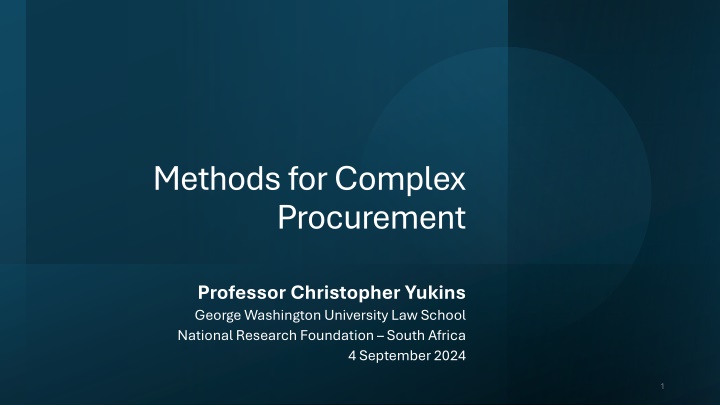



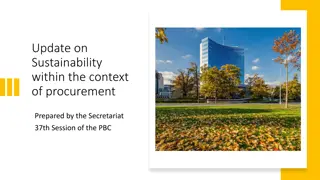
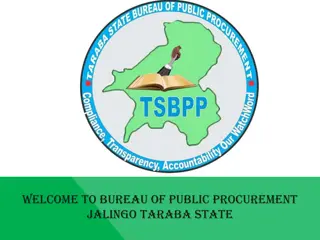
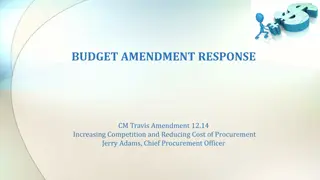
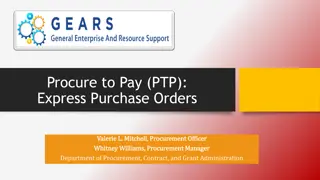
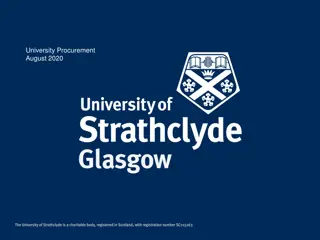
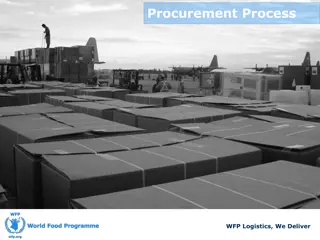

![Comprehensive Overview of Corruption Watch Submission on Public Procurement Bill [B18B-2023]](/thumb/138344/comprehensive-overview-of-corruption-watch-submission-on-public-procurement-bill-b18b-2023.jpg)

